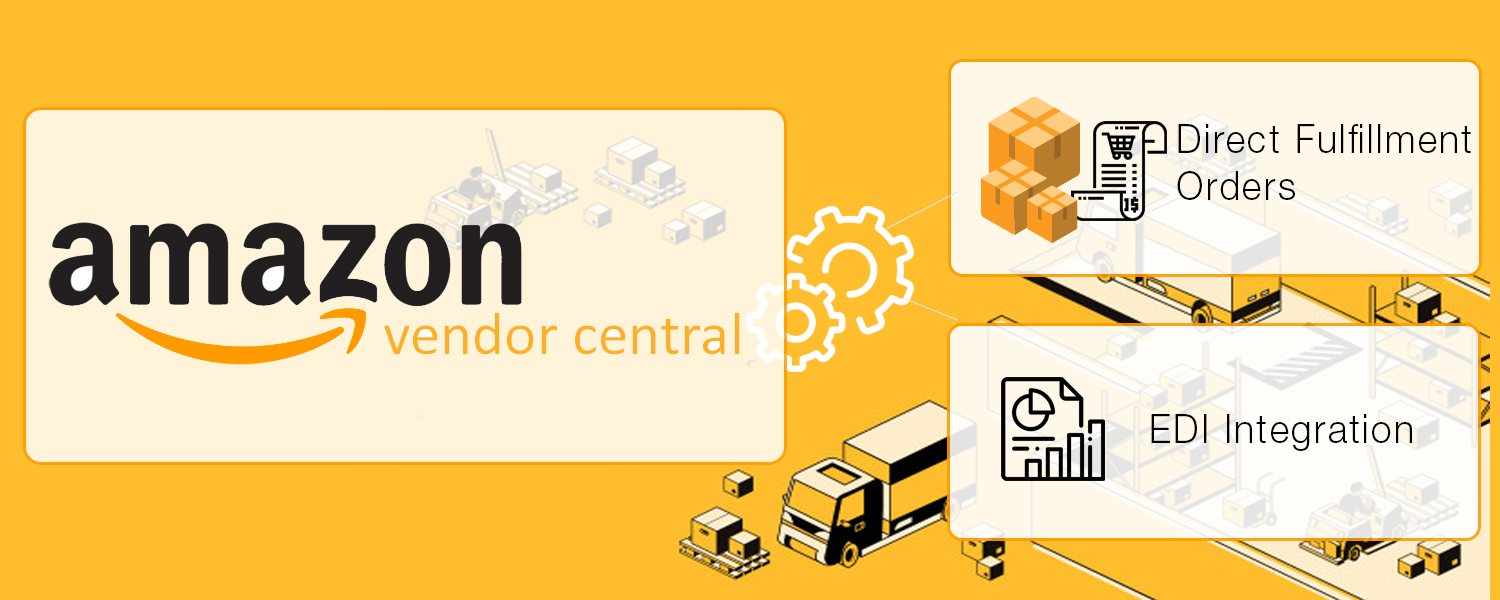Amazon Vendor Central Integration
Amazon has established itself as a giant in the online retail and e-commerce industry, and the Amazon Vendor Central integration can be instrumental in helping vendors and individual sellers get their products seen and purchased. In order to make the most of your partnership with Amazon, it is important to understand how the Vendor Central integration works, what you can do with it, how it will impact your sales and shipping methods, and what tools can be used to ensure everything runs smoothly and you can focus on the most important parts of your business.
Amazon Vendor Central integration allows you to have access to Amazon’s impressive connections, their easy to use and familiar platform, and their ever-growing client base.
This guide will give you useful information on the basics of the Amazon Vendor Central integration, and other tools that you can implement to ensure your business operates in harmony with Amazon.

What is Vendor Central?
The Amazon Vendor Central Integration is a portal used to aid in business dealings between Amazon and private vendors or sellers. For vendors, they are given the opportunity to turn over the sales and shipping aspect of their business to Amazon. Essentially, the vendor sells their merchandise to Amazon, which in turn sells and ships the product to buyers. Once established, Amazon pays vendors on a monthly basis. For individual sellers, a fee is paid to Amazon, which allows the seller to have access to the Amazon platform through which they sell their products to buyers themselves.
The advantages of selling through Amazon and using the Amazon Vendor Central Integration services include access to the familiar Amazon interface for their clients, easier shipping and fulfillment function, and being able to use and rely on Amazon’s powerful shipping partners to get buyers their products in a reliable and timely manner.
What are Direct Fulfillment Orders?
Direct fulfillment orders are the solution to potential out-of-stock situations. This provides a solution to the possibility of Amazon running out of one of your products in their warehouse. With the direct fulfillment capabilities that come with the Vendor Central Integration, you are able to ensure your customers are always able to get your products. When Amazon runs out of a product, they will continue to accept new orders. These new orders are sent directly to you, and you fulfill the orders directly from your own warehouse – you do the picking, packing, and shipping, and Amazon pays the cost of shipping and handles returns and customer service.
The advantage a backup direct fulfillment is never missing out on a sale. You are able to directly control inventory coverage to ensure your product is always available, both on your personal site and on Amazon, and you get immediate results with no added cost or hassle.
What is EDI Integration?
Simply put, EDI or Electronic Data Interchange is the electronic interchange of information and data from one company to another, rather than the traditional and much slower method of paper information exchange. You as a vendor will need to meet Amazon’s strict EDI requirements, which includes fast and efficient receiving and sending of things like invoices, advance ship notices, and other pertinent documents. By implementing EDI into your Amazon Vendor Central services, you are able to save time and money by not having to tediously enter data by hand. EDI integration also helps you to cut back on the inevitable human error, making the buying and shipping experience better for you, your team, and your customer.
Choosing the right EDI integration ensures your communication with Amazon is fast and seamless so you never miss or forget a step, sale, or piece of paperwork again, and can help you stay on top of Amazon’s vendor guidelines.
For more information about Amazon Integrations and how you can make your customers’ online retail experience excellent, talk to one of our experts!
